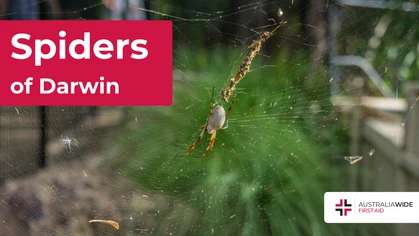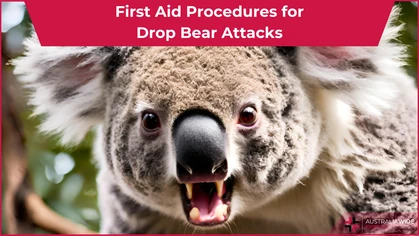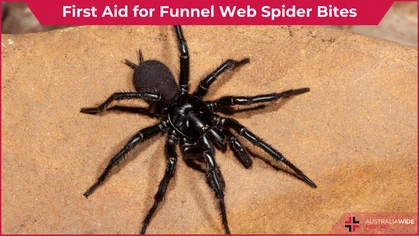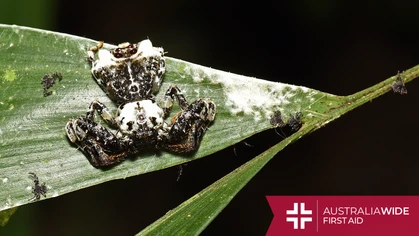First Aid for Mosquito Bites

Bites and Stings

As well as causing intense itchiness, mosquito bites can sometimes cause allergic reactions and spread disease, including dengue fever and encephalitis. Luckily, there are a few easy tips for preventing and treating mosquito bites.
Mosquito bites are unpleasant and can sometimes be dangerous, especially if you're allergic to them. But there are some simple things you can do to treat mosquito bites and relieve the itchiness and swelling. This article will teach you all about mosquito bite first aid, including the different types of mosquito bites, symptoms, complications, and treatments. By the end, you'll know how to respond in an emergency.What are mosquito bites?
A mosquito bite is a red, itchy bump that appears when a mosquito punctures your skin in order to feed on your blood. Mosquitoes are attracted to the carbon dioxide that you exhale, as well as body heat and certain chemicals in your sweat. When a mosquito bites you, it inserts its long, thin mouthpart (called a proboscis) into your skin and withdraws blood through this tube. Some people have no reaction whatsoever to mosquito bites, while others experience intense itching and swelling. Mosquito bites can also transmit diseases such as malaria, yellow fever, dengue fever, and encephalitis (inflammation of the brain).Types of mosquito bites
There are two main types of mosquito bites:- Mosquito bites: These are the most common type of mosquito bite. They usually cause a small, round, red bump on the skin that is extremely itchy. Mosquito bites usually go away on their own within a few days.
- Stings: These are less common than mosquito bites and usually only occur if you swat at or otherwise disturb a mosquito while it's feeding on you. Mosquito stings are more painful than bites and can cause swelling, redness, and itching. They usually go away within a few days.
How mosquitoes bite you
Mosquitoes are attracted to the carbon dioxide that you exhale, as well as body heat and certain chemicals in your sweat. When a mosquito bites you, it inserts its long, thin mouthpart (called a proboscis) into your skin and withdraws blood through this tube. Some people have no reaction whatsoever to mosquito bites, while others experience intense itching and swelling. Mosquito bites can also transmit diseases such as malaria, yellow fever, dengue fever, and encephalitis (inflammation of the brain).Symptoms
The symptoms of a mosquito bite depend on your individual reaction to the bite. Some people have no reaction whatsoever, while others may experience a relatively severe reaction. Mosquito bites usually cause a small, round, red bump on the skin that is extremely itchy. Mosquito bites usually go away on their own within a few days. Some of the other symptoms are:- Swelling
- Redness
- Itching
- Pain
Complications
Mosquito bites can sometimes lead to complications, such as:- Infection: If you scratch mosquito bites, they can become infected. Symptoms of an infected mosquito bite include redness, warmth, pus, and fever.
- Allergic reactions: Some people have severe allergic reactions to mosquito bites (called anaphylaxis). Symptoms of anaphylaxis include hives, difficulty breathing, dizziness, and swelling of the face or throat. Anaphylactic reactions can be life-threatening and require immediate medical attention.
- Mosquito-borne illnesses: Mosquitoes can transmit diseases such as malaria, yellow fever, dengue fever, and encephalitis (inflammation of the brain). These diseases are usually only a concern if you're travelling to countries where they're common.
Treatment
The best way to treat mosquito bites is to prevent them in the first place. Mosquitoes are most active at dawn and dusk, so avoid being outdoors during these times. If you must be outside, wear long sleeves and pants, and use insect repellent. Citronella candles or mosquito nets can also help keep mosquitoes away. If you do get bitten by a mosquito, the best way to relieve the itch is to apply a cold compress or calamine lotion. You can also take an antihistamine to reduce swelling and itching. If you have a severe allergic reaction to a mosquito bite, you should seek immediate medical attention.Mosquito bite first aid
In an emergency, mosquito bite first aid consists of the following steps:- Remove the person from the area where they were bitten as soon as possible.
- Wash the bite site with soap and water, and apply an antiseptic.
- Apply a cold compress or calamine lotion to the bite site to help reduce local pain and swelling.
- Take an antihistamine to relieve the swelling and itching. These medicines should be readily stocked in your DIY first aid kit.
- Resist the urge to scratch the bite site, as this may cause a blister, welt, or infection.
- If the person begins showing signs of an allergic reaction, call Triple Zero (000) for an ambulance, consult the Australian Resuscitation Council's anaphylaxis treatment guideline, and follow DRSABCD and be prepared to perform CPR.
- Mosquito bites usually go away on their own within a few days, but see a doctor if the bite does not improve or if you develop any other symptoms.
Mosquito bite prevention
The best way to prevent mosquito bites is to avoid being outdoors during times when mosquitoes are most active (dawn and dusk). If possible, you should also wear long sleeves and pants when you go outside, as mosquitoes can bite through clothes. Likewise, citronella candles or mosquito nets can be used for added protection. Mosquitoes that transmit disease are most likely to bite during the day, so it’s important to use repellent every time you go outside. The best mosquito repellents contain DEET, picaridin, or oil of lemon eucalyptus. You can take steps to mosquito-proof your home by:- Use screens on doors and windows
- Get rid of standing water around your home ( Mosquitoes lay their eggs in water)
- Keep gutters clean and free of debris
Conclusion
Mosquito bites are not just a nuisance; they can also transmit diseases such as malaria, yellow fever, dengue fever, and encephalitis. Mosquitoes are most active at dawn and dusk, so avoid being outdoors during these times. If you must be outside, wear long sleeves and pants, and use insect repellent. If you do get bitten by a mosquito, the best way to relieve the itch is to apply a cold compress or calamine lotion. You can also take an antihistamine to reduce swelling and itching. To learn more about mosquito bite first aid and mosquito-borne illnesses, book a first aid course with us today.
Originally published at
https://www.australiawidefirstaid.com.au/resources/first-aid-for-mosquito-bites
as part of the Australia Wide First Aid Articles Library









